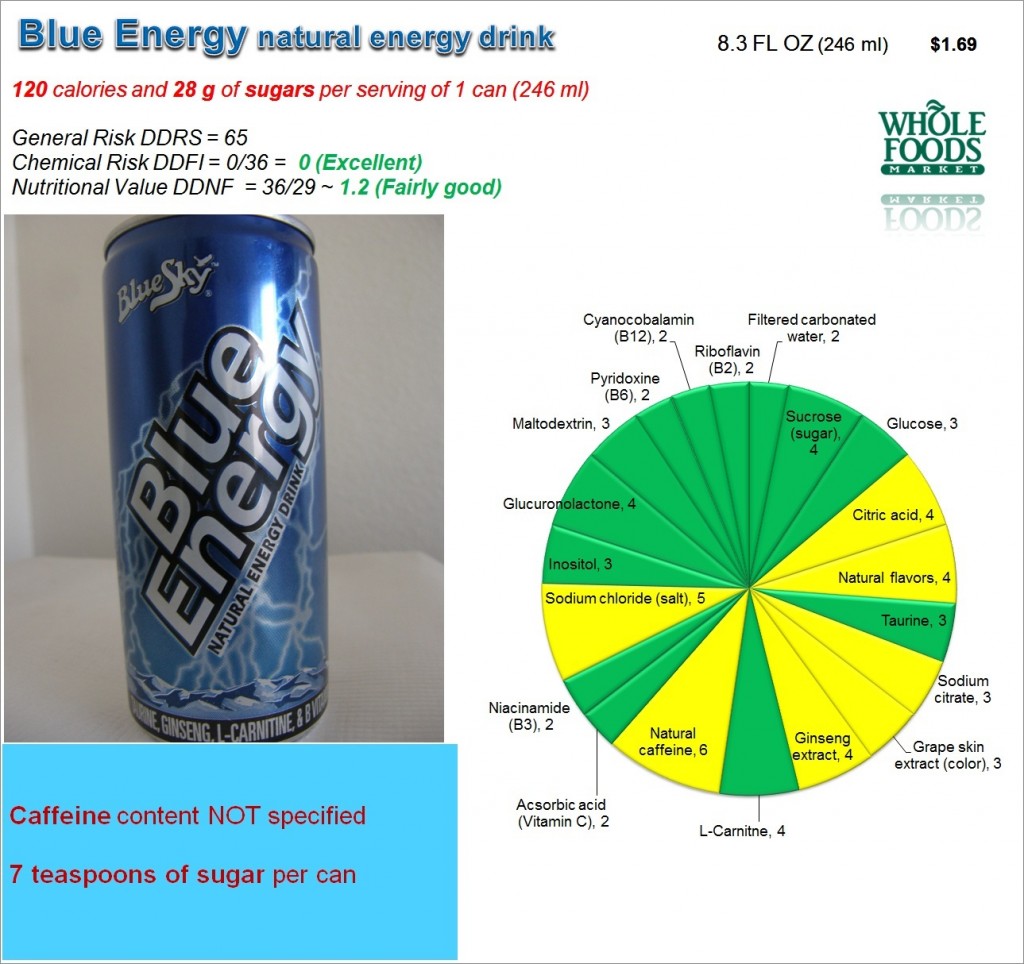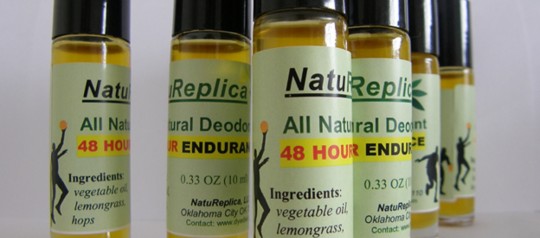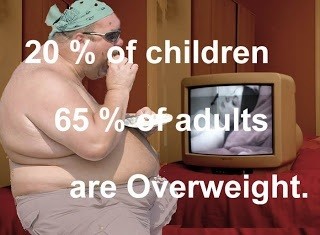Blue Energy: Caffeine is 7 times deadlier than marijuana
Energy drinks are not healthy. Consider this sequence: feeling low energy because of poor nutrition, drinking energy drinks, taking sleep aid pills and, finally, getting devastated health. Sugar and caffeine are the most common principal ingredients of many energy drinks. The American Academy of Pediatrics recommends that adolescents get no more than 100 milligrams of caffeine a day. Younger children should not drink caffeinated beverages on a regular basis. Sometimes feeling tired is a sign of an underlying medical condition, such as hypothyroidism or anemia. “Most of the energy drinks contain high-tech-sounding ingredients that are not controlled substances, but of no value, and potentially harmful.” Here is Blue Energy Natural Energy Drink for your review.
 Blue Energy: Risk and Nutrition
Blue Energy: Risk and Nutrition
The diagram looks not bad: No red segments. With a can of Blue Energy you will take zero chemical risk associated with other than caffeine food additives: DDFI = 0/36 = 0 and get a descent nutritional value: DDNF = 36/29 ~ 1.2. Despite these favorable numbers the DyeDiet does not recommend any energy drinks. This is a part of the DyeDiet’s philosophy; see below to find out why.
Caffeine is 7 times the toxicity of marijuana. The problem is that due to high caffeine content energy drinks are dehydrating, can produce negative health effects with or without alcohol, hamper normal sleep and often replace consumption of less risky beverages. A recent report shows more than a tenfold increase in the number of emergency room visits tied to the use of energy drinks between 2005 and 2009.
Common ingredients of many energy drinks are:
- Sugar is the energy source (Blue Energy contains 28 g (7 teaspoons) of sugars including table sugar and inositol)
- Caffeine is a psychoactive stimulant. While one cup (8 ounces) of strong coffee has about 125 – 150 mg of caffeine and a 12-ounce can of cola has 35 – 38 mg, an 8.3-ounce can of energy drink may contain dangerous 280 mg! Median Lethal Dose of caffeine is ~190 mg/Kg of body weight, that is some 11 g for 60 Kg person and this is 7 times the toxicity of THC-9, the principal component of marijuana
- Taurine is a multipurpose supplement
- Vitamins B are cell metabolism enhancers.
Blue Energy drink also contains:
- Grape skin extract is a natural colorant and antioxidant
- Ginseng extract, is an adaptogen with multiply stimulating effects
- Sodium chloride (table salt) 200 mg (8 % of RDI). While this is one of the primary electrolytes in human’s body, unnecessary consumption of sodium chloride may produce negative health effects, e. g. high blood pressure and increase risk of stroke or heart attack.
Similar to Coca-Cola, the “energy boost” comes from sugar and caffeine. Don’t fool yourself again!
Bottom line. Blue Energy Natural Energy Drink contains no potentially toxic or highly controversial ingredients other than caffeine. However, high sodium, sugar and unspecified high content of caffeine make Blue Energy a very risky choice. Tired to feel tired? Stop eating fast food, choose healthy diet, limit alcohol and smoking, have enough sleep and start exercise. When, once in a while, you still want a jolt (say, for a job interview), drink a cup or two of freshly brewed coffee.
Category: Energy drinks






